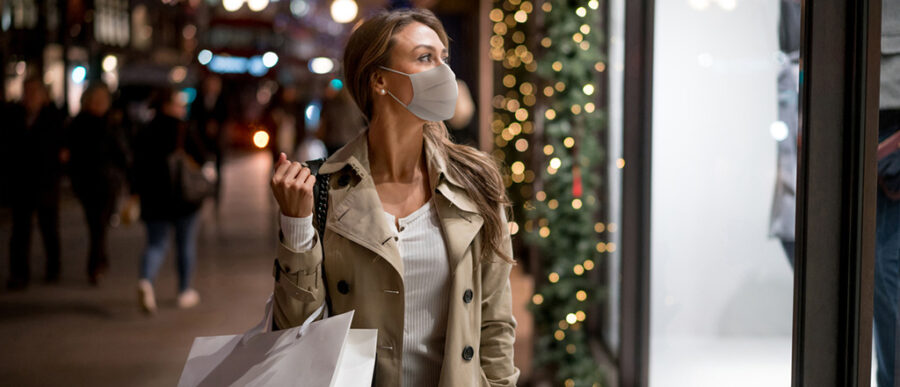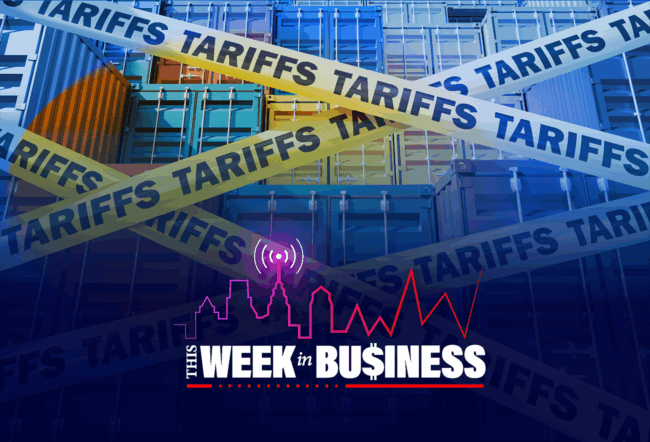In a tough year for retail, experts are using one word to describe the upcoming holiday shopping season: uncertain. What happens between November and January depends on how pandemic-weary consumers spend their money.
Consulting firm Deloitte predicts that consumers at the lower end of the income spectrum, especially those who have lost jobs or health insurance during the COVID-19 crisis, will tighten their belts through Christmas as they wait for the battered economy to fully recover. Meanwhile, those at the higher end of the income scale will spend freely as they continue to be financially unaffected by the pandemic.
“The whole idea is that we’re seeing the bifurcation of the consumer a little bit,” said Ron Sides, vice chairman and U.S. retail and distribution sector leader at Deloitte. He spoke during a recent segment of the Wharton Business Daily radio show on SiriusXM. (Listen to the podcast above.)
Deloitte expects holiday sales will be driven by a K-shaped recovery — a scenario in which growth is uneven because some sectors and income groups do better (at the top of the K) while others do worse (at the bottom). The firm’s holiday retail forecast splits the difference, estimating modest growth between 1% and 1.5%.
“We think the upper end of the economy is going to do a little bit better — probably about 2.5% to 3.5%, whereas folks who are at the lower end of the economy probably are at 0% to 1%,” Sides said. “A lot of that depends on what happens with the jobs numbers.”
The forecast, which is based mainly on consumer savings rates and unemployment, also projects the following:
- The growth rate of 1% to 1.5% will result in a total of $1.147 trillion to $1.152 trillion in spending between November and January. Last year, holiday sales grew by 4.1% and totaled nearly $1.14 trillion in spending.
- Online sales this holiday will surge by 25% to 35%, compared with 7% in 2019. E-commerce holiday sales are expected to generate between $182 billion and $196 billion this season.
“For retailers, this holiday season will continue to push the boundaries on the importance of online, convenience, the role of the store and the criticalness of safe and speedy fulfillment,” Sides said in a news release.
‘Incredible Uncertainty’
Wharton marketing professor Barbara Kahn, whose research focuses on retail, said Deloitte’s projected growth rates aren’t surprising, given the state of the economy and the acceleration of e-commerce triggered by the pandemic. However, she is surprised at how the firm looks at the K-shaped recovery. Most analysts interpret that model as referring to where white-collar and blue-collar workers are in their current finances. But Deloitte appears to interpret it based on consumer confidence in the future.
“They suggest that people who feel less confident will save more and spend less on holidays. For Deloitte this is the lower leg of the K; and the higher leg of the K is about consumers who will generally experience increasing confidence,” she said. “That’s a very different explanation than I have thought about.”
“Q4 is always huge for retail, but this year for some it is make or break.” –Barbara Kahn
Deloitte said this year’s holiday retail season is marked by “unparalleled uncertainty.” Kahn agreed, saying retailers are approaching the fourth quarter with trepidation.
“Q4 is always huge for retail, but this year for some it is make or break, and there is incredible uncertainty,” she said. “People are watching forecasts, including looking at all of their own numbers, with interest. “
Kahn said consumer confidence during the holidays will depend on several important factors: the outcome of the presidential election, the development of a COVID-19 vaccine, a second wave of the virus, and unemployment. The less affluent will continue to prioritize essentials, while the more affluent will be unrestricted. And with the pandemic putting a damper on travel, entertainment and other experiential purchases, perhaps those at the upper income will spend more on gifts, she said.
“Maybe the holidays are more important than ever because everyone needs a little joy in their lives, especially now,” Kahn said.



